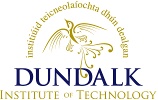Barton, Kevin and Brady, Conor and Davis, Stephen (2010) Geophysical Surveys to assist the INSTAR Boyne Landscapes Project at the Brú na Bóinne World Heritage Site, County Meath, Ireland. In: Near Surface Geophysics Group 'Recent Work in Archaeological Geophysics' , 15 December 2010, Geological Society of London, Burlington House, Picadilly, London.
Preview |
PDF
Download (2MB) | Preview |
Abstract
Historically aerial photography, and latterly LiDAR, have been used to identify and map new sites in the Brú na Bóinne World Heritage Site (WHS), an internationally significant archaeological landscape known for its Neolithic passage tombs, other monuments and megalithic art. The landscape is largely composed of the floodplain and terraces of the River Boyne which are farmed in a combination of pasture and tillage crops. The INSTAR (Irish National Strategic Archaeological Research) Boyne Landscapes Project is a response to some of the key issues to be addressed in the research strategy published in the Brú na Bóinne WHS Research Framework (Smyth, 2009). Key issues to be addressed where geophysical survey can be of assistance include: • Reconstruction and modelling the palaeoenvironment and landscape development • Establishing the nature and extent of later prehistoric activity • Understanding the structural sequence and phasing of the passage tombs • Investigating the sequence of monuments between Newgrange Passage Tomb and the River Boyne • Integrating monuments and landscapes • Understanding land-use change • Investigating the archaeology of the River Boyne The project is developing an integrated and comprehensive landscape archaeological model for the Boyne Valley, with a focus on linking changing land use and environment to the known landscape of ancient monuments and settlement. The project has aimed to collate all available landscape and environmental data into a GIS database for modelling purposes, and to use this database to identify zones of likely change in the natural and cultural landscapes. Ground-truthing of specific zones of the river system against the model developed from the GIS database is being carried out, and then integrated into the GIS, providing a comprehensive dataset for and model of landscape and river history in the Boyne Valley. Ground-truthing involves a combination geophysical survey and coring to obtain material for sedimentological and geochemical analysis and for radiocarbon dating. Surveyed zones include previously identified sites as well as areas with high archaeological potential based on landscape analysis using LiDAR. The preliminary results from low topographic profile site LP1 identified during the current project using LiDAR are presented here. LP1 is located on the north bank of the River Boyne on the first terrace above the floodplain. The feature has a diameter of approximately 100m and lies close to a standing stone (Site D). The site was initially investigated by magnetic gradiometry on a 1m x 0.25m grid. The gradiometry results partially map the northern part of LP1 where there appear to be two parallel curving ditches with the southerly ditch forming part of LP1. The remaining part of the topographic anomaly does not have a strong magnetic expression. This may be due to the nature of the sediments on the lower part of the sloping terrace and/or agricultural activity. There are two previously unrecognised features at the south and at the east of the survey area. The southern feature is presently interpreted as a sinuous ditch. The eastern feature is a circular ditch some 15m in diameter possibly enclosed by a ring of pits giving an overall diameter of some 30m. In order to investigate the sediments and the sub-surface structure of LP1 an N-S ERT transect was carried out using a Wenner array with 2m electrode or ‘a’ spacing. There is an approx. 10m height variation between the lower ground in the south and the higher ground in the north of the pseudosection. There are two main features seen in the pseudosection with a higher resistivity ‘lens’ lying in the lower ground and low resistivity material forming the higher ground. There is an intermittent, thin lower resistivity veneer of variable thickness lying on the ‘lens’. The ‘lens’ could be comprised of sands and gravels which have been laid down by the river in a bowl or hollow which itself has been exploited to form an enclosure. The features in the ERT section provide targets to be investigated by coring in order to investigate the relationship between LP1 and the riverine landscape. The poster presents results from a series of sites currently being investigated in the Brú na Bóinne World Heritage Site. Bibliography Smyth, J. (2009). Brú na Bóinne World Heritage Site Research Framework. The Heritage Council : Kilkenny.
| Item Type: | Conference or Workshop Item (Poster) |
|---|---|
| Uncontrolled Keywords: | Brú na Bóinne World Heritage Site; Boyne Valley; Archaeology; INSTAR; Paleoenvironment; Landscape development; Passage tombs. |
| Subjects: | Arts and Humanities > Archaeology |
| Research Centres: | Other |
| Depositing User: | Conor Brady |
| Date Deposited: | 10 Apr 2014 08:15 |
| Last Modified: | 11 Nov 2014 16:10 |
| License: | Creative Commons: Attribution-Noncommercial-Share Alike 4.0 |
| URI: | https://eprints.dkit.ie/id/eprint/366 |
Actions (login required)
 |
View Item |
Downloads
Downloads per month over past year

